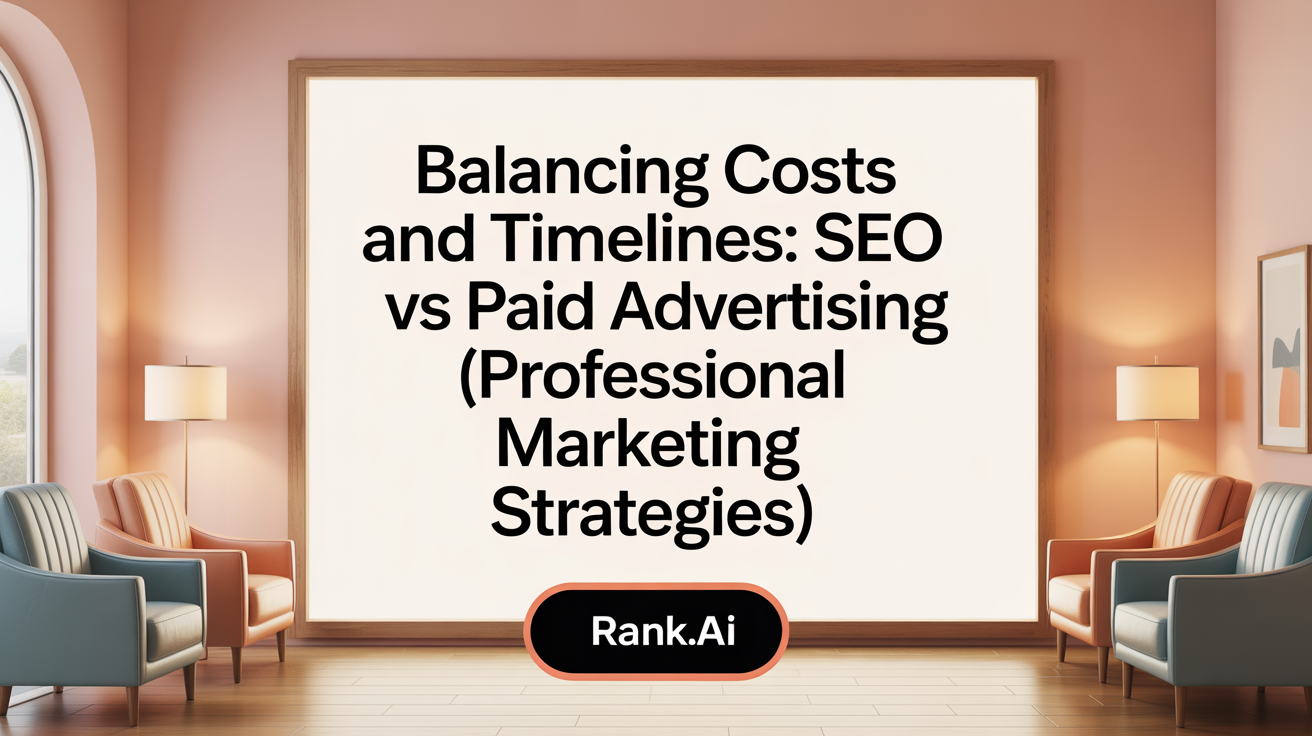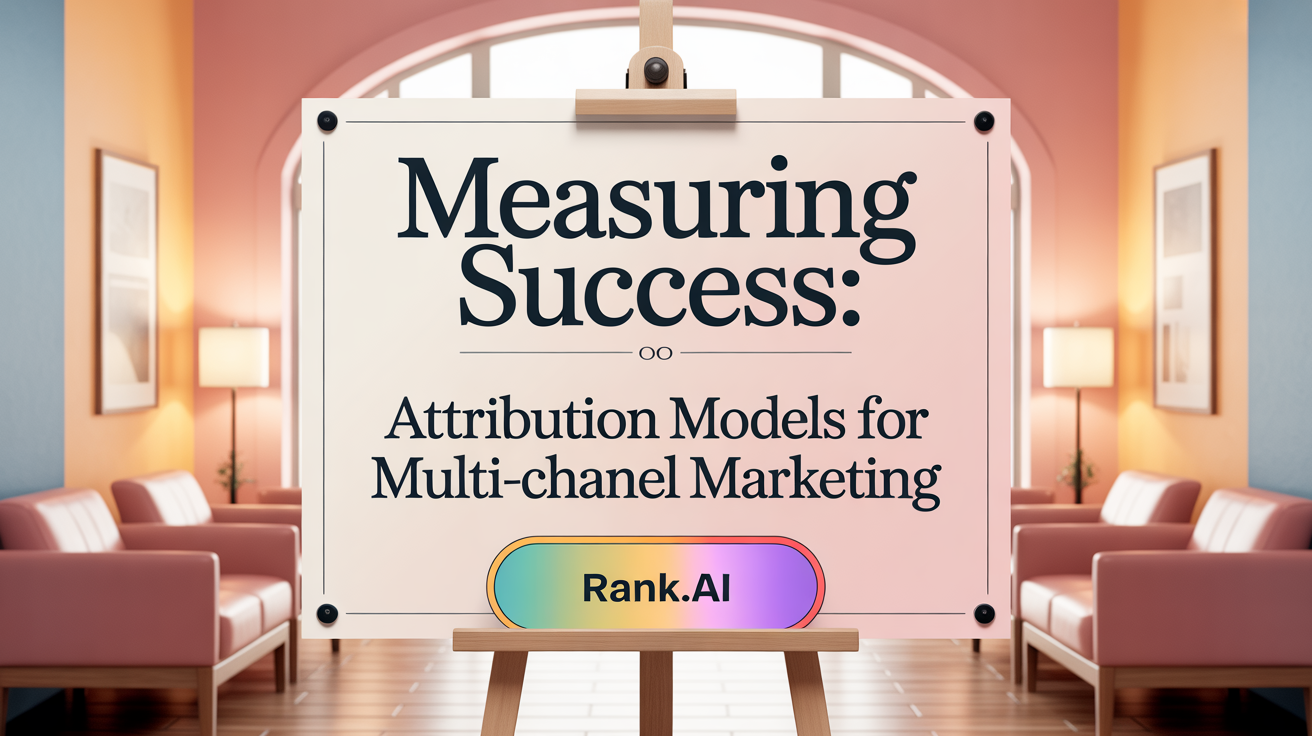Understanding Digital Marketing Channels
In the digital landscape, businesses face the crucial decision of choosing between organic SEO and paid advertising to boost online visibility and drive traffic. Each strategy offers unique advantages and challenges, making it essential to understand their differences, benefits, and how they can work together seamlessly. This article explores how to differentiate these approaches, evaluate their effectiveness, and integrate them for maximum impact.
SEO vs Paid Ads: Key Facts
- Organic SEO involves optimizing website content to improve unpaid search rankings and attract long-term, sustainable traffic.
- Paid advertising (PPC) provides immediate visibility by paying for ads that target specific keywords and demographics.
- SEO builds credibility and trust over time, resulting in steady organic traffic, while paid ads offer instant results with measurable ROI.
- Implementing SEO requires initial investment in content and technical improvements with results appearing in 3-6 months, whereas paid ads need ongoing budgets for continuous exposure.
- Combining SEO and paid ads creates synergy, where paid data informs SEO strategies and organic rankings enhance ad effectiveness.
- Effective budget balancing typically employs a 70/30 rule—focusing mainly on long-term SEO, while paid ads address short-term goals.
- Paid campaigns can be used for quick wins and targeted outreach, while SEO ensures cost-effective, lasting visibility.
- Data from paid campaigns' high-performing keywords helps optimize SEO content and website structure.
- Attribution models like multi-touch attribution are essential for understanding channel contributions and optimizing budget allocation.
- A combined approach — immediate impact from paid ads with long-term growth from SEO — maximizes digital marketing effectiveness.
1. Why SEO and Paid Ads Serve Distinct But Complementary Roles

What are the key differences between organic SEO and paid advertising strategies?
Organic SEO and paid advertising are fundamental components of digital marketing, yet they serve different purposes and require distinct approaches. Organic SEO involves optimizing your website and content to improve rankings in unpaid search results. This includes keyword research, technical SEO, backlink building, and creating valuable, relevant content. The goal is to attract traffic naturally over time, building trust and authority with search engines and users alike.
In contrast, paid advertising, often known as pay-per-click (PPC), involves paying platforms like Google Ads for ad space. These ads typically appear above or alongside organic results and are clearly marked as sponsored. Paid ads offer instant visibility and targeted reach by bidding on specific keywords, demographics, or locations. Advertisers pay each time a user clicks the ad, making it a measurable and controllable expense.
While organic SEO focuses on earning search traffic through relevance and quality, paid advertising delivers immediate results by placing your message at the top of search or social feeds. Both require strategic planning and continuous effort but operate on different timelines and budgets.
How SEO builds long-term credibility and sustainable traffic
Search Engine Optimization (SEO) is designed to establish your website’s authority and relevance over time. By consistently publishing high-quality, relevant content and ensuring your website is technically sound, you help search engines recognize your pages as valuable sources of information. This increases your chances of ranking higher in organic search results without ongoing costs per click.
Over months or even years, strong SEO efforts lead to sustained visibility. Trusted search rankings can generate a steady flow of organic traffic, which is highly credible to users. Once established, these rankings tend to require less ongoing investment, making SEO a cost-effective way to build long-term online presence.
However, achieving top rankings through SEO involves patience, as only about 19% of new pages rank in the top 10 within a year. It also demands ongoing adjustments because search engine algorithms continually evolve. successful SEO builds a durable reputation and can significantly enhance your website’s overall authority.
Paid advertising's role in delivering immediate visibility and targeted reach
Paid advertising enables instant exposure by placing your ads directly in front of your target audience. Platforms like Google Ads allow advertisers to bid on keywords and demographics, providing precise control over who sees their ads. This immediate visibility is invaluable for time-sensitive campaigns, product launches, or entering competitive markets.
Furthermore, paid ads can be customized with compelling copy, visuals, and offers, enabling immediate engagement and traffic generation. Since advertisers only pay when users click, it provides measurable ROI and allows for quick testing and optimization of messaging.
Paid campaigns are especially effective when quick wins are needed. They also complement organic efforts by reinforcing brand awareness and capturing potential customers who are further along in their buying journey.
Cost implications and timelines associated with each strategy
The costs and timeframes for SEO and paid advertising differ significantly. SEO typically requires an upfront investment in content creation, technical improvements, and link building. Results usually appear after 3 to 6 months, with top rankings often taking longer. Once achieved, these rankings can be maintained with comparatively lower ongoing costs.
Conversely, paid search demands ongoing financial commitment. Advertisers set budgets and bids, and the effectiveness depends on continual optimization and spending. While paid ads offer quick results, they cease to generate traffic when the campaign stops.
A typical approach balances both: investing in SEO for long-term sustainability and using paid campaigns for short-term boosts or targeted outreach.
The synergy created when combining SEO and paid ads for comprehensive brand presence
Combining both channels creates a powerful, comprehensive marketing strategy. Paid ads can provide immediate visibility helping to reach audiences precisely when quick results are necessary. Meanwhile, SEO establishes a sustainable, trusted presence that builds over time.
Integrating these efforts allows data sharing—such as high-performing keywords from paid campaigns informing SEO efforts and vice versa. This synergy can improve overall rankings, increase visibility across the search engine results page (SERP), and maximize return on marketing investments.
Users are more likely to trust brands that appear both in paid and organic search results, enhancing credibility and click-through rates. Additionally, a blended approach offers flexibility, allowing businesses to adapt quickly to market changes and optimize their customer journey effectively.
By leveraging the strengths of both strategies, brands can enjoy the benefits of immediate results and sustained growth, making this integrated approach a cornerstone of modern digital marketing.
2. Integrating SEO and Paid Ads: Strategic Approaches to Optimize Marketing Impact

How SEO and paid ads can complement each other in marketing campaigns
Integrating organic SEO with paid advertising creates a powerful synergy that amplifies overall marketing efforts. While SEO builds a long-term foundation by improving website visibility through optimized content, backlinks, and technical SEO, paid ads provide immediate exposure by placing targeted ads at the top of search engine results and social media feeds.
When used together, these channels support each other; data from paid campaigns can reveal high-performing keywords and audience segments that inform SEO strategies. Conversely, strong organic rankings increase trust and credibility, enhancing the effectiveness of paid efforts.
For example, a brand launching a new product can use paid ads to generate quick awareness while simultaneously working on SEO to establish sustained visibility through high-quality, evergreen content. This combined approach ensures both quick wins and lasting growth, maximizing reach across the customer journey.
Effective strategies for balancing budget and goals between SEO and paid ads
Balancing the investment between SEO and paid advertising requires careful planning aligned with business objectives. Typically, a strategic rule like the 70/30 budget split can guide resource allocation—allocating around 70% to the primary channel based on goals and 30% to support the other.
Goals should dictate focus: short-term campaigns requiring immediate results may lean heavily on paid ads, especially during product launches or promotions. Meanwhile, long-term brand building and authority come from steady investment in SEO.
Prioritizing audience targeting, using data-driven insights to identify high-conversion keywords and demographics in paid campaigns, helps optimize spend. Performance metrics such as conversions, return on ad spend (ROAS), and organic rankings should guide ongoing adjustments to ensure maximum ROI.
Using paid ads to generate quick results while investing in SEO for sustainable growth
Paid advertising is ideal for quick results. It can drive instant traffic, generate leads, and create opportunities for timely promotions. This immediacy is especially beneficial when launching new products, entering competitive markets, or targeting specific audience segments.
Simultaneously, investing in SEO ensures that over time, organic rankings improve, reducing dependency on paid spend and increasing cost efficiency. High-quality content, technical SEO, and backlinks gradually boost organic visibility, creating a reliable source of traffic and trustworthy brand reputation.
For instance, during a campaign, paid ads can capture immediate attention while SEO efforts lay the groundwork for ongoing organic reach. This dual approach ensures balanced growth, providing fast wins with paid efforts and long-lasting visibility through SEO.
Leveraging data from paid campaigns to inform and enhance SEO efforts
Data collected from paid campaigns—such as high-performing keywords, click-through rates, user behavior, and conversion data—offer valuable insights to refine SEO strategies. These metrics help identify the most relevant keywords, optimize content around user intent, and improve landing pages.
For example, if paid ads reveal that certain keywords generate high conversions, SEO teams can prioritize optimizing content for those keywords to improve organic rankings. Additionally, retargeting data can inform website user experience improvements and content personalization.
Cross-channel data sharing allows for a continuous feedback loop, increasing the precision of both paid and organic marketing efforts, leading to higher engagement and conversion rates.
Performance measurement and attribution modeling to assess combined channel effectiveness
Accurate measurement of combined SEO and paid advertising efforts is essential to optimize overall marketing impact. Attribution models—such as first-touch, last-touch, and multi-touch—help identify how each channel contributes throughout the customer’s journey.
By implementing multi-channel attribution, marketers can see whether paid ads primarily drive initial awareness, while organic SEO sustains engagement and conversions over time. This comprehensive view assists in allocating budgets effectively and tuning strategies.
Utilizing analytics tools and regular performance reviews ensures that both channels work harmoniously. Adjustments based on real data—like shifting budget toward high-converting keywords or refining ad targeting—maximize the return on investment.
| Aspect | Strategy | Benefit | Example |
|---|---|---|---|
| Complementarity | Use organic SEO insights to guide paid ad targeting | Increased relevance | Keyword data from paid campaigns enhance SEO content |
| Budget Balance | Allocate based on goals, using a 70/30 rule | Efficiency & impact | Focus on SEO for long-term, paid for quick wins |
| Data Utilization | Share performance metrics for optimization | Higher ROI | Use search term data from PPC to improve SEO |
| Measurement | Apply multi-touch attribution | Full channel understanding | Track user journey from ad click to organic conversion |
The ongoing integration of SEO and paid advertising strategies fosters a cohesive digital presence, capable of adapting to changing algorithms, market conditions, and consumer behaviors. This balanced, data-informed approach helps businesses capitalize on immediate opportunities while building a sustainable, trustworthy brand over time.
Comparing Costs, Effectiveness, and Timelines of SEO vs. Paid Ads
How do the costs, effectiveness, and timelines of organic SEO and paid advertising compare?
Organic search engine optimization (SEO) and paid advertising are two fundamental strategies in digital marketing, each with distinct financial and timeline profiles. Organic SEO generally involves lower ongoing expenses; once your website is optimized with high-quality content, relevant keywords, and backlinks, the traffic it generates is essentially free. This makes SEO a cost-effective approach over the long term. However, building a robust organic presence takes time—usually between three to six months—before seeing significant improvement in rankings and traffic.
Paid advertising, commonly through platforms like Google Ads or social media ads, requires continuous investment. Advertisers bid on keywords and pay each time a user clicks on their ads (Pay-Per-Click or PPC). Campaigns can deliver immediate results—often within minutes or hours—allowing businesses to instantly appear in prominent positions at the top of search results or social feeds.
In terms of effectiveness, SEO is invaluable for establishing credibility and trust. High organic rankings are perceived as more trustworthy by users and tend to generate sustained traffic over time. Paid ads excel at achieving quick visibility, capturing immediate attention, and driving targeted traffic, especially for time-sensitive campaigns, product launches, or entering highly competitive markets.
ROI (Return on Investment) considerations also differ. SEO’s ROI increases over time as rankings solidify and content ages well, making it highly cost-efficient once initial efforts pay off. Paid campaigns, on the other hand, can provide quick returns but require ongoing expenditure; if spending stops, so do the traffic and leads.
Combining these two methods often yields the best results. While paid ads can deliver swift, targeted engagement, organic SEO builds durable authority and trust, contributing to sustained lead generation and brand reputation. To maximize marketing effectiveness, businesses should align their spend with their goals—using paid ads for rapid impact, and investing in SEO for long-term growth.
Making the Informed Choice: Combining Strengths for Marketing Success
Choosing between organic SEO and paid advertising is not an either-or decision but rather a strategic balance that depends on business goals, budget, and timelines. Organic SEO excels at building lasting brand authority and generates cost-effective, credible traffic over time, while paid advertising provides the agility to capture immediate opportunities with pinpoint targeting. Leveraging insights from paid campaigns to refine SEO and using organic content to bolster paid ad relevance can amplify overall marketing effectiveness. Ultimately, the most successful digital strategies integrate both approaches to navigate the complexities of online visibility, delivering both instant impact and enduring growth.
References
- Pros and Cons: Paid Ads vs. SEO - Hive Digital
- Organic Search vs Paid Search: How to use each
- Paid Vs. Organic Search: Which One Is Right For Your Business?
- Paid Ads vs. Organic SEO - Which is for You? - Skol Marketing
- SEO and Paid Ads: How They Work in Tandem - Darwill
- Exploring the Relationship Between Paid and Organic Traffic
- How to Choose Between SEO vs Paid Ads for Maximum ROI



